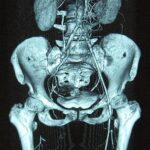Understanding Non-Blanching Rashes: Petechiae and Purpura
A non-blanching rash, characterized by petechiae and purpura, is a significant clinical sign that can indicate a range of conditions, from minor viral illnesses to serious, life-threatening infections. Unlike blanching rashes that temporarily disappear when pressure is applied, non-blanching rashes remain visible, suggesting blood leakage into the skin. This article provides a comprehensive guide to the differential diagnosis of non-blanching rashes, focusing on petechiae and purpura, to aid clinicians in prompt assessment and management.
Defining Petechiae and Purpura
Petechiae and purpura are both types of non-blanching rashes, differentiated by their size.
-
Petechiae: These are small, pinpoint, non-blanching spots, typically less than 2 mm in diameter.
-
Purpura: These are larger non-blanching spots, greater than 2 mm in diameter.
The “glass test” is a simple bedside technique to determine if a rash is non-blanching. By pressing a clear glass firmly against the rash, a blanching rash will temporarily disappear under pressure, while a non-blanching rash will remain visible.
Assessment of a Non-Blanching Rash
Prompt assessment by a senior clinician is crucial for any child presenting with fever and petechiae or purpura. A thorough evaluation involves history taking and physical examination to narrow down the differential diagnoses and guide management.
History
A detailed history should include:
- Immunization Status: Especially important in children under 6 months or those with incomplete vaccination records, as they are more susceptible to vaccine-preventable infections like meningococcal disease and pneumococcal infections.
- Symptom Onset and Progression: Rapid onset and progression of rash and other symptoms can be indicative of serious infections.
- Medications: Recent antibiotic use may mask bacterial infections, complicating diagnosis.
- Risk Factors: Immunocompromised status or history of invasive bacterial infections increase the risk of serious illness.
- Trauma History: Consider accidental or non-accidental injury as mechanical causes of petechiae.
- Associated Symptoms: Bleeding tendencies, abdominal pain, joint pain, or mobility issues can point towards specific underlying conditions like Henoch-Schönlein purpura or hematological disorders.
- Travel History: Travel to regions with specific infectious diseases might be relevant.
- Sick Contacts: Exposure to viral or bacterial infections within the community or household.
Examination
A comprehensive physical examination should assess the child’s overall well-being and identify any signs of serious illness. Key examination findings include:
- Vital Signs: Assess for tachycardia, tachypnea, and desaturation, which are signs of systemic illness.
- Shock Assessment: Differentiate between cold shock (narrow pulse pressure, cold extremities, prolonged capillary refill) and warm shock (wide pulse pressure, bounding pulses, flushed skin with rapid capillary refill), both indicating severe circulatory compromise.
- Conscious State: Evaluate for altered mental status, including irritability, lethargy, or decreased responsiveness.
- Limb Tenderness and Mobility: Limb tenderness or reluctance to move may suggest musculoskeletal or infectious etiologies.
- Hepatomegaly and Splenomegaly: Enlarged liver or spleen can be associated with hematological malignancies or infections.
- Lymphadenopathy: Swollen lymph nodes may indicate infection or malignancy.
- Joint Examination: Assess for swelling, erythema, or tenderness, which can be features of vasculitis or rheumatological conditions.
Differential Diagnosis of Non-Blanching Rashes
The differential diagnosis for petechiae and purpura is broad, encompassing infectious, mechanical, hematological, and other causes.
| Category | Specific Causes
